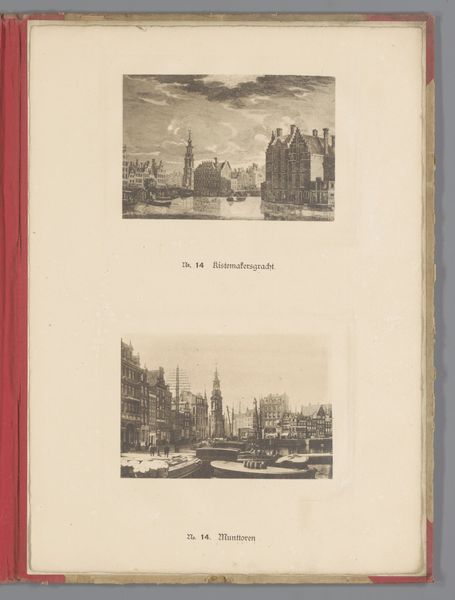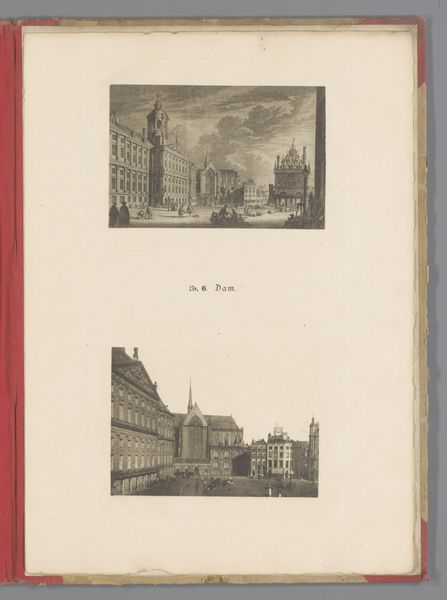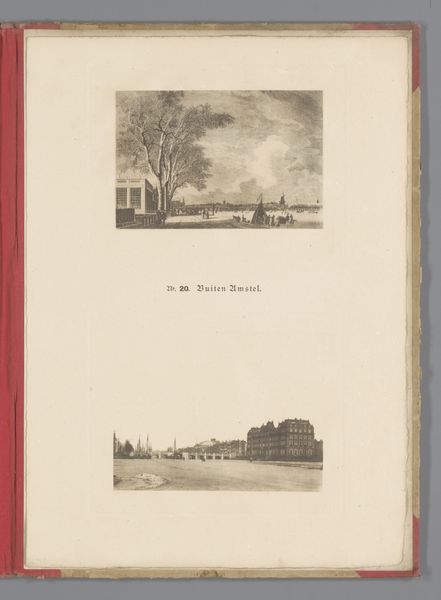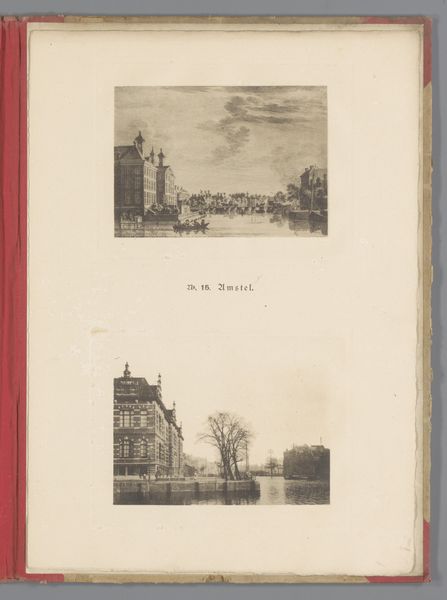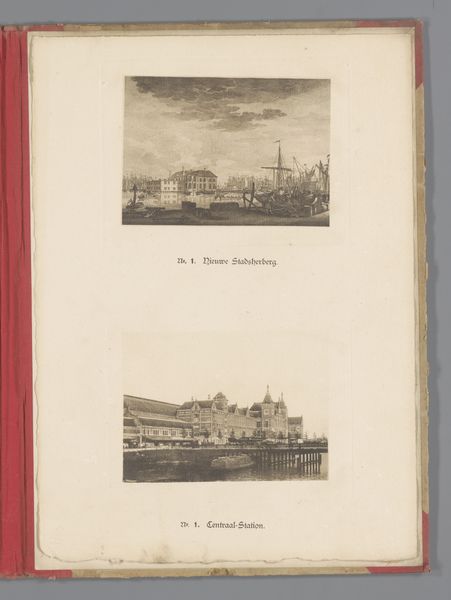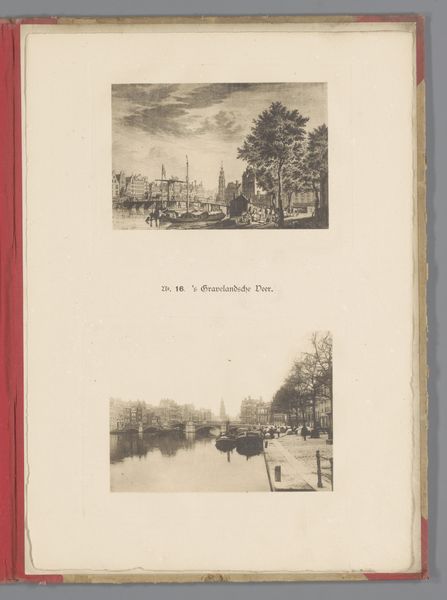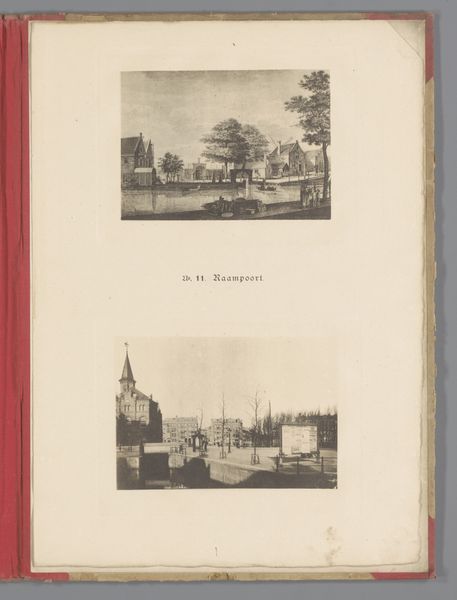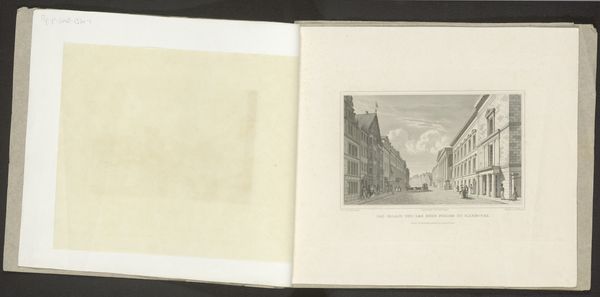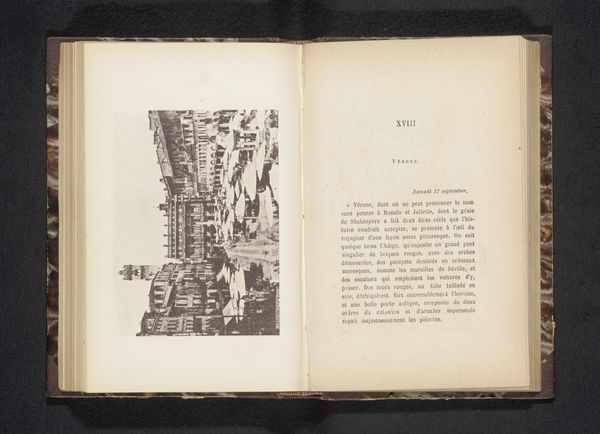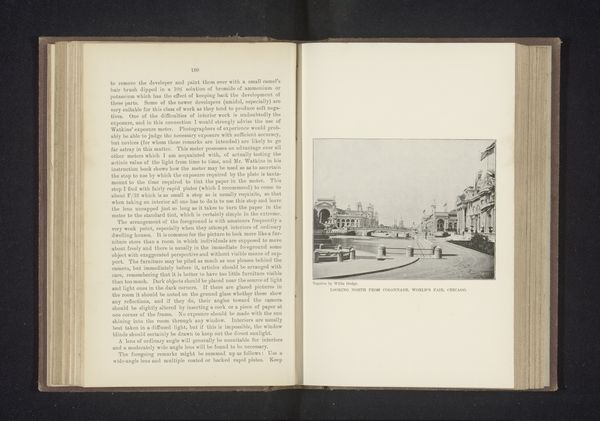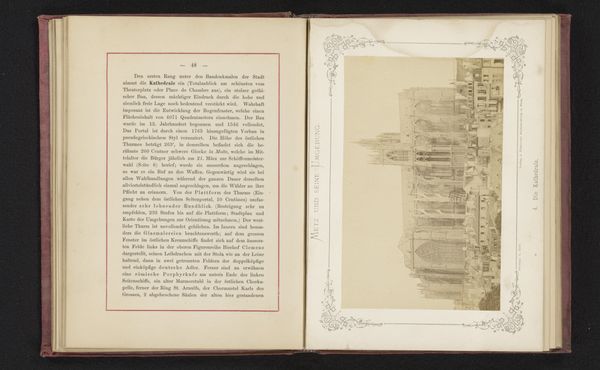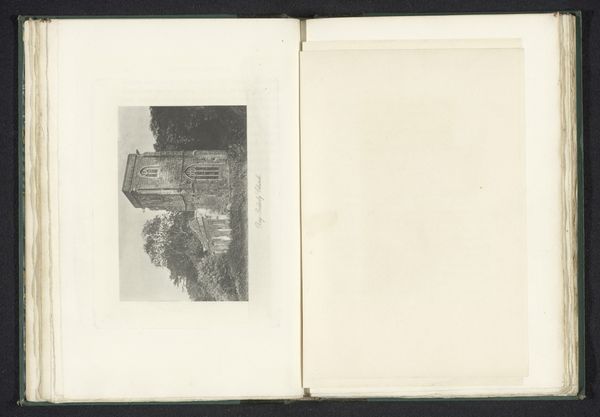
Twee gezichten op het Rondeel en de Halvemaansbrug te Amsterdam, waarvan één reproductie van een prent door De Coppier naar Jan de Beijer 1890 - 1900
0:00
0:00
drawing, paper, ink
#
drawing
#
dutch-golden-age
#
landscape
#
paper
#
ink
#
coloured pencil
#
cityscape
#
realism
Dimensions: height 348 mm, width 250 mm, height 94 mm, width 137 mm, height 96 mm, width 136 mm
Copyright: Rijks Museum: Open Domain
Curator: This work offers a fascinating dual perspective on Amsterdam. Attributed to an anonymous artist around 1890-1900, and rendered in ink and colored pencil on paper, it is titled "Two Views of the Rondeel and the Half Moon Bridge in Amsterdam, one a reproduction of a print by De Coppier after Jan de Beijer." It is a cityscape and also has hints of realism to it. Editor: What strikes me immediately is the duality itself, how two near-identical scenes are presented, yet there are also differences in viewpoint. The emotional weight shifts – a comparative study of the city’s iconography. Curator: Precisely. I'm curious about the choice of ink and pencil. There is a labor element to consider; replicating De Coppier's work signifies a process of appropriation. What meanings emerge when an anonymous artist physically engages with and copies a former master's depiction? Editor: Well, we can unpack the visual language being employed here. Bridges, waterways, the architecture - all serve as symbols of connection and passage. To me, this artwork reflects the historical Dutch Golden age. Each line of the drawings can be deciphered as historical data of Amsterdam city life. Curator: Let's go back to these twin cityscapes. One is explicitly acknowledged as a reproduction. Do the buildings signify stability, or could they hint at industrial shift and material culture of Amsterdam at this time? It could show mass reproduction through printmaking democratizing access to urban imagery. Editor: Both I think! I can feel some tension when observing these sketches. Look closely and you'll also note differences, as minor deviations point towards a psychological portrait – the city seen and re-seen, filtered through the consciousness of different observers at slightly shifted periods of time. There is much emotion there! Curator: Intriguing how that psychological take feeds back into thinking about process. The drawing becomes evidence not only of Amsterdam but of how Amsterdam was perceived and consumed by later society through print and artifice. It's really exciting to examine all these layers, and their socio-historical implications. Editor: It definitely invites an intimate dialogue between the present, past, and future meanings embedded in familiar cityscapes. There are multiple ways to think about it.
Comments
No comments
Be the first to comment and join the conversation on the ultimate creative platform.

